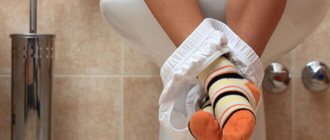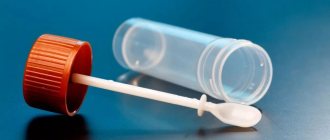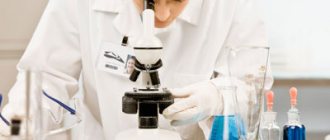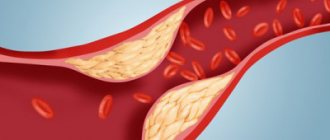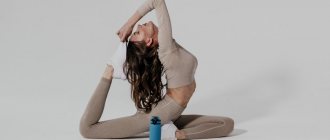Rules for collecting stool for studying intestinal microflora (dysbacteriosis)
General requirements:
Use only disposable containers provided by the laboratory. The container is sterile, does not require pre-treatment and is completely ready for use. Feces should be collected in the morning - after natural bowel movements. Sample preparation in advance is not permitted. Freezing or storing the sample in the refrigerator is not permitted. All examined patients, 1-3 days before taking the sample, should be on a diet that excludes the intake of foods that enhance fermentation processes in the intestines and lactic acid products, as well as alcohol and bacterial preparations (containing bifidobacteria, lactobacilli, E. coli). Conducting research and collecting material before starting treatment with antibiotics, antiseptics, antifungal drugs or no earlier than 2-3 weeks after the end of the course of treatment.
What you should definitely do:
Thorough toileting of the external genitalia and anal area. Pre-urinate. It is not recommended to collect feces from the toilet. Defecate in a dry, clean container - a vessel or a “night vase”. First you need to rinse well with soap and a sponge, rinse repeatedly with tap water, and then rinse with boiling water and cool. It is not permissible to treat the vessel with synthetic detergents. Transfer the stool sample with a special spoon mounted into the lid of a sterile container in an amount of no more than 1/3 of the container’s volume. Close the lid carefully.
The following must not be allowed:
You cannot conduct a stool examination earlier than 2 days after an enema, an X-ray examination of the stomach and intestines, or a colonoscopy. All examined patients, 1-3 days before taking the sample, should be on a diet that excludes the intake of foods that enhance fermentation processes in the intestines and lactic acid products, as well as alcohol and bacterial preparations (containing bifidobacteria, lactobacilli, E. coli). On the eve of the study, you should not take medications, including: laxatives; Activated carbon; preparations of iron, copper, bismuth; use fat-based rectal suppositories. Do not allow urine or water into the sample. Conduct stool examinations in women during menstruation.
Failure to comply with the rules for collecting, timing and storage of samples obtained for research leads to a negative result.
General rules
- 72 hours before the test, stop using rectal suppositories and oils, laxatives and enemas, and also stop taking medications that affect bowel function and the color of stool.
- Collect a stool sample after a natural bowel movement without the use of enemas or laxatives.
- Make sure that foreign impurities do not get into the biomaterial: water, urine, genital secretions, disinfectants and chemicals contained in diapers: - before defecation, wash and dry the perineum; - collect feces from a clean and non-moisture-absorbing surface: this can be a clean plastic bag, oilcloth, a clean vessel or pot. Collecting feces from the toilet, diapers or nappies is prohibited!
- Place 1-2 teaspoons of biomaterial in an airtight container. If you need to perform several tests, prepare a separate portion of biomaterial in a separate container for each study.
- Deliver the container to the laboratory department within 2 hours after collection. To keep the container warm, you can place it in a thermos with an ice cube or in a bag of cold packs.
If you monitor indicators over time, take each analysis under the same conditions: in the same laboratory department, using the same method.
Analysis of stool for coprogram
No special preparation is required.
When diagnosing certain diseases, a doctor may prescribe a special diet for several days.
3-4 days before the study, stop taking laxatives, castor and vaseline oil and stop administering rectal suppositories. Also, a few days before the examination, it is necessary to avoid taking iron and bismuth supplements.
It is unacceptable to send feces for examination in matchboxes or cardboard boxes, as this changes the shape and consistency of the feces and distorts the results of the analysis. Disposable plastic containers must be used.
Selected studies
Biochemical analysis of stool
Take 2-4 g (1 teaspoon) of feces into a separate container and deliver it to the laboratory department within 3 hours. Be sure to indicate the type of stool (diarrhea, constipation, normal, stool with laxatives).
Examination of feces for occult blood
Three days before the test, it is necessary to exclude meat, liver, blood sausage and all foods containing iron (apples, bell peppers, spinach, white beans, green onions, cucumbers) from the diet.
Collect 1-2 teaspoons of feces in a special container. Deliver to the laboratory within 5 hours after collection.
Scraping for enterobiasis
On the eve of the study, it is recommended to obtain a special tube with a probe for collecting biomaterial from the laboratory department.
For this study, a scraping is taken from the perianal folds (around the anus) by the patient himself. In the morning, without getting out of bed, before performing hygiene procedures and using the toilet, move the probe in a circular motion around the anus. Place the probe in a special tube. Deliver to the Hemotest laboratory department within 3 hours after collection.
Necessary materials
How to prepare for a stool test? There is nothing complicated in this procedure. Most of us know how to take a stool test.
To do this you will need:
- clean dry container;
- spatula (stick).
A glass or plastic bottle (necessarily with a lid) is suitable for collecting stool. You can purchase a special sterile container at the pharmacy. A spatula for collecting material is built into its lid, which is very convenient. For laboratory tests, 10-15 ml of feces is usually sufficient, that is, about one or two teaspoons.
What you need to know
In order for the study to show reliable information and not have to be repeated, before collecting biomaterial it is necessary to understand how to carry it out correctly and under what conditions to store feces for analysis. Experts warn that the requirements depend on which test is prescribed for the patient.
When issuing a referral, the doctor must explain in detail what rules need to be followed, whether the biomaterial can be stored in the refrigerator, at what temperature and for how long. If the patient has the opportunity, it is better to take the stool to the laboratory immediately after the morning bowel movement.
This is due to the fact that by studying a fresh sample, you can obtain the maximum amount of information. If emptying occurred in the evening, and the biomaterial needs to be delivered to the medical center in the morning, it can only be stored in the refrigerator. If the patient is scheduled for a biochemical study, the biomaterial may be stored in the freezer.
Basic principles and rules
When preparing for analysis, observe the following rules:
- Avoid overeating. Large portions overload the gastrointestinal tract, sometimes even injuring the mucous membranes, which distorts the results.
- Eat small meals. Eat every 2 hours, but little by little.
- Limit the amount of food and its calorie content. Consume no more than 2200 kcal per day. The total weight of food received should not exceed 2 kg.
- Prefer gentle cooking methods. Avoid frying. Boiling, stewing and steaming are encouraged.
- Grind your food and avoid hard particles in it. You can grind food. Chew your food thoroughly. Do not swallow seeds along with fruit, they can damage the inner lining of the intestines.
Diet
During preparation, the diet is completely revised. The menu is being adjusted and heavy foods are being removed.
Authorized Products
During preparation you are allowed to eat:
- low-fat dairy products, cottage cheese;
- vegetables;
- porridge (except millet, wheat and barley);
- fruits;
- beverages.
It is advisable to boil and bake vegetables and fruits. You can prepare vegetarian soups. It is allowed to add a little butter to dishes. Once a day they eat a slice of yesterday's bread. Drinks allowed are compotes and teas.
You can add a little sugar, but honey is preferable.
Prohibited
During preparation, refuse:
- green fruits and vegetables;
- fish, meat and poultry;
- seafood;
- legumes;
- nuts;
- fermented baked milk, sour cream and curdled milk;
- alcohol;
- soda;
- coffee.
You should not eat foods with complex chemical compositions. This applies to pickles, marinades, desserts, etc. Additives in the form of preservatives, dyes, flavor enhancers and thickeners can irritate the intestines. You need to temporarily give up hot spices, salt and dishes that contain them. You can’t eat fast food or fatty sauces.
Before taking the test, you should not eat salted or pickled foods.
Why do you need stool diagnostics?
Many people wonder what a stool test is, and why is it needed, and is it possible to detect serious diseases through such diagnostics? The analysis is carried out in order to study the state of the microflora of the gastrointestinal tract and the digestive system as a whole.
In its normal state, feces have an amorphous consistency and consist mainly of the remains of foods consumed by humans. In a healthy person, only food residues are visible in the feces, since the stomach does not always completely digest all the food.
The presence of inclusions such as blood, mucus, or changes in the color and consistency of stool is a good reason to seek help from specialists. Usually, to identify the true cause of the disease, doctors suggest taking stool for analysis. In medicine, such an analysis is called a coprogram.
Coprogram as a research method carefully studies the components of stool and gives an objective assessment of the patient’s health status. Thanks to the results of the coprogram, the specialist will be able not only to find out about the cause of the disease and make an accurate diagnosis, but also to prescribe an adequate treatment method.
This research method requires special preparation, and also allows you to identify the exact cause of the following stable conditions:
- feeling of nausea, open vomiting;
- blood in feces;
- flatulence;
- belching, accompanied by an unpleasant odor and aftertaste;
- painful symptoms in the stomach;
- dysbiosis.
Sample menu
A sample menu might look like this:
- The first breakfast is rice porridge with tea and a little honey. Second breakfast - compote with cottage cheese. Lunch - mashed potatoes. Afternoon snack - a glass of milk. Dinner - milk soup with vegetables.
- The first breakfast is buckwheat porridge, the second is a glass of milk. Lunch - vegetable stew and compote. Afternoon snack - kefir. Dinner - potato casserole.
- The first breakfast is cottage cheese with honey, the second is jelly. Lunch - boiled rice. Afternoon snack - peach. Dinner: homemade yogurt.
How did you collect feces the old fashioned way?
Let's first talk about how they took poop for analysis before, when every apartment had toilets with a shovel, that is, the poop did not immediately plop into the water, but fell onto a place specially designed for it, a landing pad, so to speak. So, the diagram looked like this:
- Water was scooped out from the site and it was covered generously with toilet paper.
- Then they piled a pile on top of this paper.
- After that, the required amount of feces was picked out with a match and placed in a matchbox.
With the help of such a simple scheme, they extracted poop for analysis. But it has a number of errors. This is extremely inconvenient and there is a possibility of foreign bodies getting into the stool. Also, the toilet is not sterile, there are a lot of bacteria that try to spread to you and your shit.
Thanks to modern technology, the very toilets that allowed you to shit and then pick out the feces have sunk into oblivion. Today, even in old houses you don’t always see one like this. So how do you get shit for analysis today? Try to leave the thicker teal on the wall of the toilet and scrape it off into a box? Not at all. There is a smarter way. To do this, you need to shit in a chamber pot, for example, and then cut up the poop in it, choosing the piece you like.
ATTENTION!!!
Urine getting into feces is unacceptable!
Next, we will talk about modern approaches and tell you how to conveniently and quickly collect poop for analysis.
Stool storage depending on the study
Before undergoing a stool test, patients ask their therapists how long stool can be stored so that the examination is accurate. Not all human biological samples are stored equally. The storage time for stool depends on the purpose of the study. It is allowed to take a stool test in the evening, but not earlier.
- Coprogram. To correctly pass a stool test for coprogram, you need to empty your bowels in the morning and immediately send the stool to the laboratory. If the timing is not suitable, the feces are left in the refrigerator, where the stool analysis is stored until the morning. The time between bowel movement and delivery should not exceed nine hours. The container can be stored in the refrigerator on the main shelf. If feces is on the door or in the freezer, the result will be distorted by constantly opening the refrigerator or by freezing. The temperature inside it should not exceed 9 degrees.
- Fecal analysis for opisthorchiasis and worm eggs. The study is carried out in a short time, otherwise the helminths are destroyed by enzymes in the excrement. Keep feces in the refrigerator using preservatives taken from the laboratory assistant. With preservatives, excrement will be preserved longer, but not more than 5 hours.
- Dysbacteriosis. This analysis allows us to determine the quantitative ratio of virulent and non-pathogenic intestinal microflora. If there are more pathogenic microorganisms, then their degree of sensitivity to antibiotics is determined. There are opportunistic bacteria that do not harm the body under normal environmental conditions and in the absence of unfavorable factors. Stool is collected prior to treatment. The maximum time for delivery of excrement is three hours, during which time it is kept in the cold.
Important! The doctor will make an accurate diagnosis if all criteria are met. If the laboratory technician notices a storage violation, a repeat test is prescribed, clarifying to the patient how long stool can be stored for analysis.
How to store a sample before the laboratory
If the biomaterial was collected at night before bedtime, the patient must adhere to certain rules that will help preserve the sample until the morning. If possible, defecation should be done as late as possible so that the number of hours between bowel movement and delivery of the collected material to the laboratory is minimal.
Decoding stool analysis for coprogram
You also need to remember the following:
- To maximize the shelf life of the sample, it is recommended to collect biomaterial in a special sterile container, which is sold in pharmacies. It is better to open such a container immediately before collecting the material. After this, the container must be tightly closed with a lid.
- How long a sample can be stored depends on the type of test. The maximum shelf life of feces is 8 hours. For some tests, for example, for enterobiasis, the shelf life is even shorter - up to 5-6 hours. There is no point in storing the sample longer than this time, since the result will be unreliable.
- It is recommended to keep feces collected in the evening in the refrigerator. Permissible temperature is from -4 to +8 degrees. In this case, the container cannot be placed on the lower and especially on the upper shelves. It is best to place the container on the middle shelf of the refrigerator, since this is where the proper temperature is maintained.


